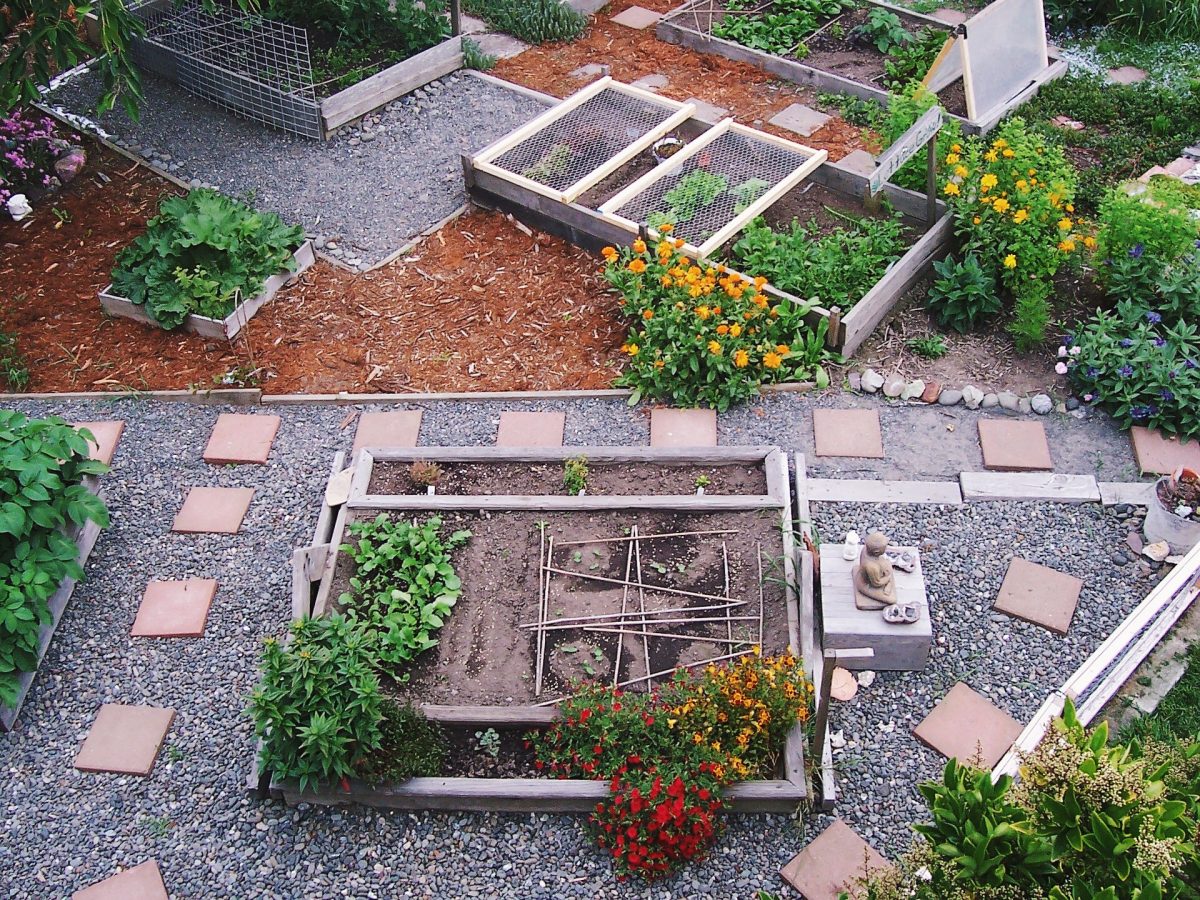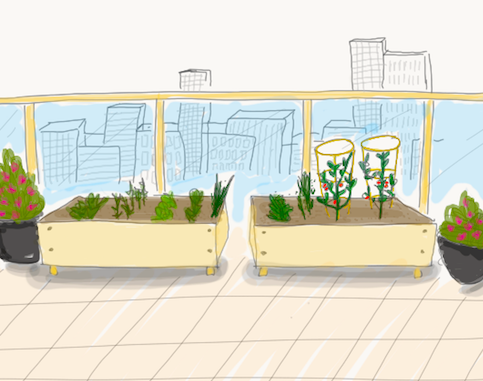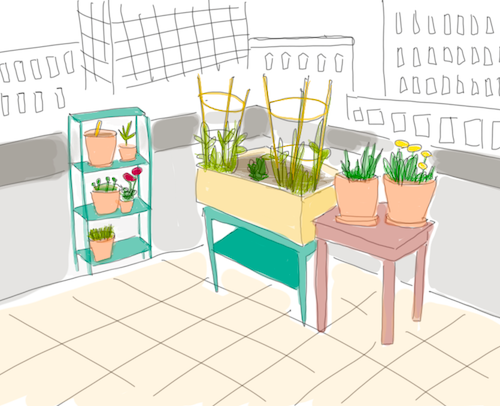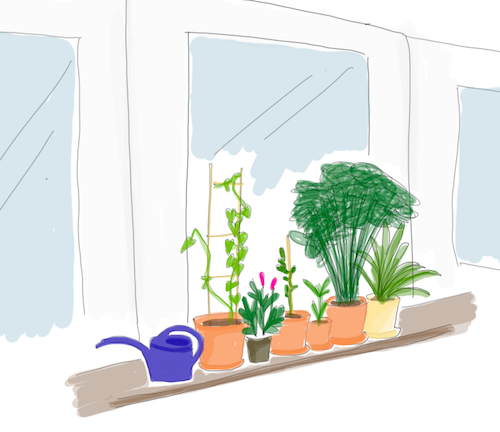
It’s easy for us urban families to walk right by the display of seed packets at the local hardware store in early spring. Personal outdoor space isn’t exactly easy to come by, and urban gardening seems like another world reserved for those with a proven green thumb.
Like many aspects of life in the city, urban gardening takes some extra creativity, but it’s far from impossible. Helpful resources can aid us in navigating the world of gardening in small urban spaces, green thumb or not! One such resource is Urban Gardeners Republic, an online urban gardening community built to guide gardeners of all levels of experience. By offering valuable information about urban gardening, and connecting new gardeners with experienced advisors, UGR can give advice in nearly every situation.
I spoke with Bertrand Blancheton, the founder of Urban Gardeners Republic, about the importance of urban gardening and got to take a virtual Skype tour of his own backyard garden in Zurich, complete with composting, raised beds, and irrigation. Garden goals, to be sure!
Benefits of Urban Gardening
It came as no surprise to hear Bertrand say that gardening has benefits physically, mentally, and emotionally. Gardening can be immensely relaxing, and even has benefits as horticultural therapy. Growing your own food means you can eat your own ultra-local produce, and all green spaces are beneficial for cities in helping to clean the air, even if just a little. But Bertrand thinks gardening benefits can even go a level deeper.
“When someone harvests their first organic tomato, for instance, they realize how much effort it took to grow that tomato. It requires even more effort to get a really good tomato, one that’s bright red, round, and beautiful. It takes a lot of care to grow it, and takes a lot of care to pick the tomato at just the right moment for peak deliciousness – not too early and not too late.”
“As people begin to understand the effort necessary for growing food,” Bertrand said, “it will begin to change their relationship with food.”
An appreciation for delicious produce will grow along with an increased understanding of seasonal produce.
Bertrand said forming a relationship with food comes early in the gardening experience. It doesn’t take long to see the fruits of your labor – literally – and gardeners have a direct connection to the earth. The food systems of the world are changing, and there are innovations in urban farming happening across the world. In a small way, gardeners everywhere can become part of the global change.
Building individual relationships with food in this way is one of the most important benefits of urban gardening.
Understanding the effort involved in growing food helps bring an appreciation for the food industry, farmers, and the earth that gives us bounty.
Gardening also creates greener cities. Doing our part, however small, to care for green spaces means our city will be greener overall. That’s a good thing for many reasons, cleaner air being one of them.
Caring for an urban garden is also a great activity to do with kids and creates an opportunity for bonding around something that everyone can take part in. Watching your plants grow together is a direct educational experience, no matter your age.
Gardening in the City
Urban Gardeners Republic was created out of the desire to give gardeners in cities everywhere the resources and help they need to begin a garden of their own. UGR has become one of the experts in the world of urban gardening and an advocate for gardening in every kind of urban space, whether it be a backyard, rooftop, balcony, or indoors on your kitchen counter.
Breaking in to the world of urban gardening can feel like entering a world of unknowns if you’re a beginner gardener or inexperienced, but UGR makes it easier with helpful articles and the opportunity to connect with a garden advisor. I asked Bertrand to give us a mental picture of what gardens look like in various urban spaces. He laid out some considerations for gardening in the city, and makes it seem truly attainable! Which kind of urban garden fits in your lifestyle?
Rooftop Gardens

- Rooftop gardens have plentiful sunlight!
- Grow plants and veggies on the roof using container gardening. This allows the containers to be moved if necessary.
- Smaller and more compact containers are ideal to lower the risk of tipping over or falling.
- Take consideration of the wind if planning a rooftop garden. Wind will dry out plants quickly, so a reserve of water will be necessary.
Backyard Gardens
- Backyard gardening in the city is not much different than traditional gardening.
- Go for raised beds if you have enough space. Growing plants in a raised bed will help protect them from pests and weeds.
- When you have enough space (like a backyard), it’s simple to set up a system to collect water or install drip irrigation. It sounds like advanced gardening stuff, but UGR gives step-by-step instructions.
- “With a raised bed and drip irrigation,” Bertrand said, “You’ll have no trouble growing anything you want!”
Balcony Gardens

- Grow plants in containers if you have balcony space.
- Consider how much sun exposure you will get. North-facing balconies get limited sun and it will be really tough to grow plants there. A balcony that protrudes from the building (cantilevered) will get much better sun than a recessed balcony.
- If your balcony is recessed, plants must be raised to meet the sun. You can get around this challenge creatively by raising the container to sun level when the plant is small. Lower the container as the plant grows and be sure the leaves and stalks are always able to soak in the sun.
- Remember, if you’re gardening on your balcony, keep some space for you to live out there too. An important part of gardening is to enjoy spending time in it!
Growing Indoors

- Growing plants indoors is possible in the smallest of spaces. If you’re a true beginner, Bertrand advises purchasing a growing system with a light. “There is a startup cost,” he says, “but it’s empowering to be able to grow your own herbs in your own kitchen!”
- Proper watering is the main challenge with indoor plants. Watering from the top can create fungal growths and other problems on the soil surface. Set up a system that allows watering from the bottom to avoid those issues.
- Remember also to give your plants enough sunlight without placing them directly beside the window. Direct sunlight can actually burn the leaves of an indoor plant!
Tending your own little green space in your city can be meaningful and fun, and UGR was built to help you do just that. Urban gardens may not be able to change the trajectory of global agriculture, but steady numbers of people consciously making choices to cultivate urban green spaces add up to change.
Creating an urban garden will give you and your family a connection to the earth, a better relationship with food, and a tiny oasis in the little of your city.
You’ll have a green thumb in no time! 🌱
A huge thanks to our new friends at Urban Gardeners Republic for taking the time to get excited with us about gardening in the city! Follow UGR on Instagram or Twitter for inspiration, and browse gardening tips, resources, advice, and ideas on https://urbangardenersrepublic.com.
